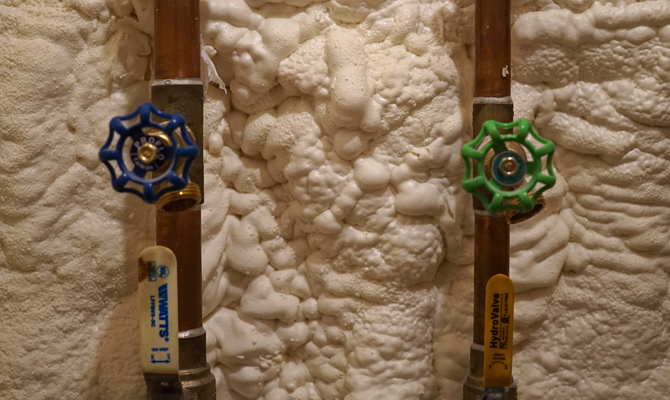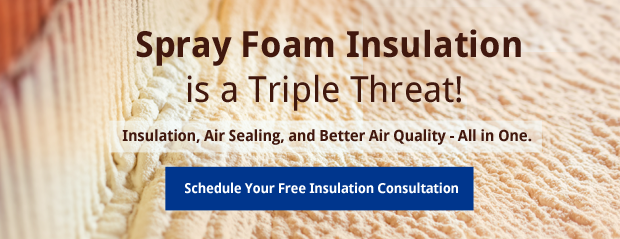
Building science experts refer to a home as a system: a series of components that work together to keep the home comfortable, safe, and secure. Consider your HVAC system for example. While it’s comprised of it’s own parts, it’s also a major part of your home’s overall ecosystem.
Fixing HVAC system issues on a one-off basis may seem more economical upfront, but this approach could end up costing you more money long term. Resorting to band-aid solutions in a home can lead to bigger and more complex problems over time. So it’s important to diagnose issues at their root cause. Hence why spray foam insulation can have a major impact on the health of your hvac system.
Spray Foam Insulation: A Powerful Component
If you’re looking for the ideal insulation solution for your current home or new construction project, it’s hard to find a better option than spray foam. When applied to a surface, spray foam expands and hardens to close gaps and form an airtight seal. Air leaks are one of the biggest sources of overworked HVAC systems and rising energy expenses in Florida, and spray foam helps to solve that problem.
Because of its sealing properties, spray foam offers superior insulation when used in attics, crawl spaces, and walls. It also has water-resistant properties that keep your home protected from moisture, as well as being mold and mildew resistant. What’s more, spray foam does not absorb water so it can withstand water damage in the event of a flood.
Spray foam is made from inert polymers, meaning none of the components will decompose or deteriorate over time. Homeowners that choose spray foam will enjoy optimal insulation conditions over longer periods of time than they would by using fiberglass or cellulose. Plus, that longer life span leads to fewer waste materials being sent to the landfill when it comes time to repair or replace traditional insulation.
Spray Foam for Your HVAC System
If we return to the idea of a home being a system, then we must look at some very specific considerations when choosing spray foam insulation. For example, if you are considering re-insulating a home with spray foam, keep in mind that it’s crucial to ensure that your HVAC system’s ventilation component is working properly before getting started.
Some furnaces, water heaters, and fireplaces are built for open combustion, meaning they draw air from the home and send exhaust vapors out a flue. In a tightly-sealed home, this could pose a significant safety hazard. The alternative? Sealed combustion and power-vented appliances that draw air from outside the home, which make them the proper mate for an HVAC system in a sealed home.
In older homes and systems, ventilation was oftentimes uncontrolled, Air would enter the home through gaps, cracks, unsealed windows and doors. Some older homes would completely recycle their indoor air once every hour! Applying spray foam insulation to older Florida homes can reduce this recycling cycle to once every 5 or 10 hours.
Building a Strong System
To get the most out of your HVAC system, it’s important to consider all the ways that you can contribute to a strong home as a system. For example, duct cleaning and sealing should not be overlooked, as up to 30 percent of the air that moves through your ductwork is lost from leaks. It’s also important to check all the areas where air can escape, especially in existing homes. This can include where plumbing, ducts, or electrical wiring comes into the home, behind wall switch plates, gaps around windows and doors, dryer vents, fireplace flues, and exhaust fans.
To learn more about cutting heating and cooling costs and building a strong home ecosystem with spray foam, schedule a free insulation consultation with Wattson Home Solutions today. You’ll learn how to keep your home more comfortable and improve the indoor air quality while keeping costs down. Schedule your consultation now!








